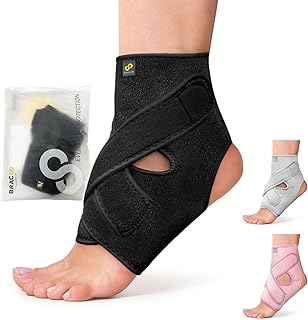In the realm of medical imaging, the quest for accurate diagnostics is paramount, especially when it comes to conditions like Achilles tendon tendinopathy. This common overuse injury, characterized by stiffness and pain in the Achilles tendon, can have serious consequences if left untreated. Understanding the morphological changes in the Achilles tendon is crucial for effective management, and this is where imaging modalities play a vital role.
The Achilles tendon, known as the body’s largest and strongest tendon, is prone to degenerative changes that can lead to tendinopathy. Various imaging techniques, such as clinical examinations, radiographs, ultrasound, and magnetic resonance imaging (MRI), are employed to assess the condition of the Achilles tendon. Among these, MRI stands out for its ability to provide detailed insights into the pathological findings of the tendon and surrounding structures in the ankle joint.
Previous studies have primarily focused on measuring Achilles tendon thickness (ATT) to assess tendinopathy. However, the Achilles tendon cross-sectional area (ATCSA) offers a more comprehensive evaluation by considering the entire tendon’s cross-sectional area, thus capturing asymmetrical tears and partial thickening that may be missed by ATT measurements alone.
In a recent study comparing ATT and ATCSA in subjects with and without Achilles tendon tendinopathy, researchers found that ATCSA was a more sensitive and precise parameter for diagnosing the condition. The study included 31 subjects with tendinopathy and 36 asymptomatic individuals who served as controls. Ankle MRI scans were used to measure ATT and ATCSA, revealing significant differences between the two groups.
The results showed that ATCSA had higher diagnostic accuracy, with optimal threshold values identified for both ATT and ATCSA. The responsiveness and precision of ATCSA exceeded that of ATT, indicating its superiority in predicting Achilles tendon tendinopathy. Furthermore, the study conducted subgroup analyses by gender, highlighting potential variations in diagnostic performance based on sex.
These findings underscore the clinical significance of ATCSA as a superior predictor of Achilles tendon tendinopathy compared to ATT. By prioritizing ATCSA measurements in diagnostic assessments, clinicians can enhance the accuracy of their evaluations and improve patient outcomes. Future research may delve deeper into longitudinal studies to track the progression of tendinopathy and evaluate treatment responses using imaging parameters like ATCSA.
While the study sheds light on the diagnostic value of ATCSA, it also acknowledges the potential of emerging technologies like artificial intelligence (AI) to enhance diagnostic capabilities further. Deep learning algorithms, such as convolutional neural networks (CNNs), hold promise for automating the analysis of Achilles tendon abnormalities on MRI, offering new avenues for refining diagnostic accuracy and reproducibility.
In conclusion, the study’s findings advocate for the adoption of ATCSA as a preferred imaging parameter for diagnosing Achilles tendon tendinopathy. By leveraging advanced imaging techniques and innovative technologies, healthcare professionals can elevate the standard of care for patients with tendon disorders, paving the way for more precise and effective diagnostic and treatment strategies in the future.
📰 Related Articles
- Tiger Woods Undergoes Surgery for Ruptured Achilles Tendon
- Vitrification Outperforms Slow-Freezing in Ovarian Tissue Preservation Study
- Ultrasound Imaging Proves Effective in Diagnosing Appendicitis in Men
- Transcranial Doppler Vital in Diagnosing Pediatric Artery Dissection
- Surgical Excision Outperforms Steroid Injection for Ganglion Cysts






